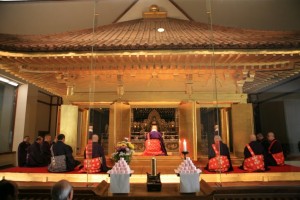In order for an international project such as the ILC to succeed, it is not enough to be able to construct the accelerator itself. It is also critical that the site is geologically sound and that the living conditions of the staff and their families are agreeable. There are currently two candidate sites for the ILC in Japan: the Sefuri mountains in the south island of Kyushu and the Kitakami mountains located approximately 400 kilometres north-east of Tokyo. For each region, site-related studies are ongoing that include geological surveys and studies on planning of the international area created by the future ILC laboratory.
Each site has a stable granite bedrock with a length of more than 50 kilometres. An international team of experts has visited both sites and found no serious problem that would prohibit successful construction and stable operation of the ILC. Even though extensive site studies have already been conducted with local initiative in the past, the survey in each region under tha initiative of KEK is being started and to be completed by spring, next year. The new geological studies include borings at key locations, physical surveys, field explorations, airborne laser altimetry, as well as examination of past studies. After this round of geological studies is completed in about one year, sufficient geological information will have been obtained to be certain that there are no big surprises later on.
The studies on planning the international city and necessary infrastructures for the ILC are mostly conducted by the initiative of regional organisations. These studies include laying out concrete requirements for a truly international research facility such as the ILC in terms of transportation, housing conditions, educational environments for children, employment opportunities for spouses of the ILC staff, supports by local governments, availability of cultural and physical recreations, and so forth. Another area of study are the economical and cultural effects that the ILC will create in the region close to the facility as well as in Japan as a whole. It is expected that an international town of several thousand people will be created by scientists and engineers with their families from all over the world. If the living environment is not satisfactory, however, the researchers will come only to perform minimum work and go back to their home countries immediately afterwards. Then, there will be no international village, and no community of researchers where people from different cultural backgrounds can socialise. These studies involve interviewing researchers from different countries, visiting major laboratories and projects in the world such as CERN and ITER, analysis of economical ripple effects of the ILC, ecological impact studies, and definition of functions of the central campus.
Both candidate sites in Japan have a rich cultural history and natural beauty. The Sefuri site is close to major cultural centers such as Dazaihu where civilization from China and Korea landed in Japan, and the Kitakami site is next to many historical sites including Hiraizumi – a 12th-century city and a world heritage site. The ILC has been an international programme from its design stage, and the planning of its campus and surrounding area will be conducted internationally. Together with the strong commitment of the local governments to make the ILC truly international, one can be quite sure that it will be an attractive and comfortable place to come and stay for a prolonged period.




Recent Comments